Recent press covering the “Pearl of the Andaman” has not been positive. However, there are persuasive reasons why this negativity will be short-lived. With significant tailwinds driving the island’s visitor numbers, the underlying market fundamentals suggest that Phuket will weather the storm and continue its maturation as one of the world’s premier tourist destinations.
The disaster of the Phoenix boat capsize last year, killing 40 Chinese tourists has hurt the island’s tourist sector. Indeed, Chinese hotel occupancy in Phuket has decreased by between 10-30% according to recent estimates. As this demographic consists of more than 40% of the island’s tourists, this has been detrimental for Phuket’s economy.
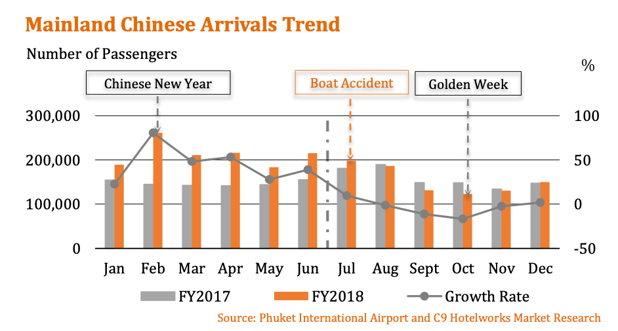 Fig.1: Graph showing the reduction in Chinese arrivals following the Phoenix boat accident last year
Fig.1: Graph showing the reduction in Chinese arrivals following the Phoenix boat accident last year
However, we predict this localised downturn to be short-lived. Promising market fundamentals, diversification of the island’s tourist industry and significant infrastructure investment accompanied by legislative changes are due to foster conditions under which Phuket’s tourist industry can continue to boom as it did in the past.
2018 saw the island beat all previous tourist records
Despite a reduction in the latter half of 2018, early 2018 saw record-breaking numbers of tourists to the island: H1 of 2018 saw a 17 percent increase from the previous year.
The Airports of Thailand recorded close to 9 million passengers arriving at Phuket International Airport in 2018: this represents an eight percent increase in YoY traffic. Moreover, these figures were observed in spite of the mid-year tourist-repelling Phoenix boat disaster, again demonstrating the resilience of the island’s tourist industry. Granted, there was a 1.3 percent decrease in visitors YoY between July-October: however, given the spate of negative press which has befallen Phuket, this is hardly a catastrophic reduction.
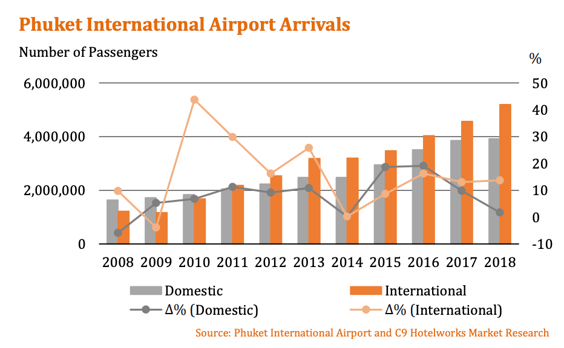 Fig.2: Graph showing total international tourist arrivals
Fig.2: Graph showing total international tourist arrivals
A fall in numbers in 2019 was also not unsurprising given the meteoric increase in tourist numbers which contributed to the record-breaking figures for 2018. The first quarter of 2018 saw international visits increase by 28 percent, with Chinese visits increasing by 45 percent between January-June 2018 compared to the same period in 2017. YoY figures fell by only three percent between July-December following the boat collapse. Furthermore, a slowdown was predictable given the current infrastructure capacity of the island. Given the circumstances, this observed reduction in visitors is hardly earth-shattering and is likely to be only short-lived.
These numbers are to the background of flourishing tourism on the Thai mainland: with 38.27 million tourists visiting in 2018- a 7.5 percent increase from 2017. For perspective this is greater than the total population of Canada. 2019 is predicted to attract 41.1 million tourists, an 11 percent increase. Sitting on the doorstep of the mainland, Phuket is therefore likely to benefit from this tourist boom.
… 2018 also saw record hotel occupancy rates…
Surprisingly, given the reduction in tourist numbers as a result of the boat disaster, Phuket broke its 12-year occupancy rate record in 2018. At its height, according to STR Global the island saw 95.4 percent occupancy in February. The Q1 occupancy rate exceeded 90 percent for the first time since 2010. Perhaps in light of this H1 occupancy rate for 2018 exceeded 80 percent for the first time since 2010.
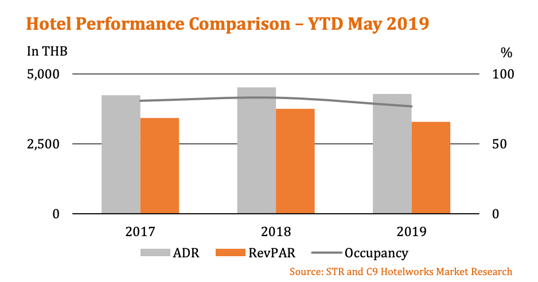 Fig.3: Graph showing 2018's record-breaking hotel occupancy rates
Fig.3: Graph showing 2018's record-breaking hotel occupancy rates
Effective tourist management of Phuket has mitigated the worst of the decrease in Chinese tourist numbers
The Thai government’s decision to waive visa fees for 21 countries has led to a huge influx of passengers from India and Malaysia amongst others (Indian tourists more than tripled and Malaysian tourist numbers we up by more than a third in May 2019 YoY)- fertile ground upon which to build the future of Phuket’s tourist industry.
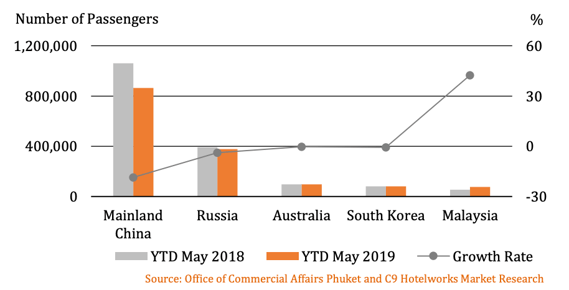 Fig.4: Graph showing the huge 40% increase in tourists from Malaysia to Phuket in early 2019
Fig.4: Graph showing the huge 40% increase in tourists from Malaysia to Phuket in early 2019
Diversification away from the Chinese market is arguably a good thing in the long-term: over-reliance on this single market rendered Phuket vulnerable to localised Chinese shocks, which is especially relevant given the recent Sino-American trade war sparked by Trump’s tariffs.
Hotel and property developments are still seeing significant investment
According to research by C9Hotelworks, there are 59 planned developments in the pipeline on the island, signalling a lively and eager industry working to attract tourism. Thus, despite short-term reductions in tourist inflows, visitor numbers are likely to remain high in the medium term due to significant private infrastructure investment
.jpg?width=622&name=Ao_Sunset%2c_Koh_Lipe_(2007-03-321).jpg) .Fig.5: Phuket's beaches are world-famous for their stunning white sand
.Fig.5: Phuket's beaches are world-famous for their stunning white sand
Increasing accessibility to the island will ensure international tourism continues to rise…
By May 2018 there were 23 new routes added to the Phuket International Airport service compared to the previous year. This demonstrated the island’s historic reliance on China, as 19 of these were directly from the Chinese mainland.
However, this route expansion was not confined solely to China. The increase in Indian tourist interest in the island has been reflected in recent developments. 9 Air are now servicing a direct route from Guiyang to Phuket and GoAir are looking to add 7 direct routes from Dehli, Mumbai and Bengaluru by Q4 of 2019.
This diversification is a positive as it will force the Thai authorities to broaden Phuket’s appeal to other tourist markets. Thus, when the collective memory of the Chinese market has recovered from the Phoenix boat incident and tourists return in their droves, they will be returning to a more diversified, less vulnerable Phuket tourism sector.
…a second international airport will also help to stem infrastructure overcrowding…
As observed by the President of the Airports of Thailand, Ninai Surismatthakam, “demand is outpacing supply” in Phuket. This was made evident when the runway had to be closed overnight when cracks were found running down the main runway strip.
With a projected 10 percent rise in tourist numbers annually over the next 4-5 years, the infrastructure on the island is in dire need of investment. It is encouraging, therefore, that the President of the Phuket Chamber of Commerce, Thanusak Phungdot has made infrastructure development a priority. Planned construction of a 12-lane expressway connecting Koh Kaew to Phuket airport alongside a 60km railway line connecting Tha Nun, in Phongnaga province, to Phuket airport and the inner city will ease travel around the island.
The decision to open a new International Airport in Tambon Khok Kloi in Phangna Province’s Takua Thung District of Phuket with a total investment of 75 million Baht is also welcomed. Predicted to have a 10 million passenger capacity per annum upon completion, the new airport will ease the pressure on existing infrastructure and allow for sustainable future growth.
 Fig.6: A Rendering of Phuket's 2nd New International Airport
Fig.6: A Rendering of Phuket's 2nd New International Airport
Low boom/bust volatility due to minimal financing of foreign property market
Thailand is notoriously difficult for foreigners to obtain property financing. Case in point is Phuket, in which the great majority of purchases occur without the use of domestic credit. This means that the majority of foreigners front the cost of property developments from overseas lenders. This makes the Phuket property resilient to domestic macroeconomic boom and bust scenarios: the development, construction and investments going into Phuket are not vulnerable to cheap credit drying up. This makes the property market a relatively safe investment location in light of the fears of a global economic slowdown.
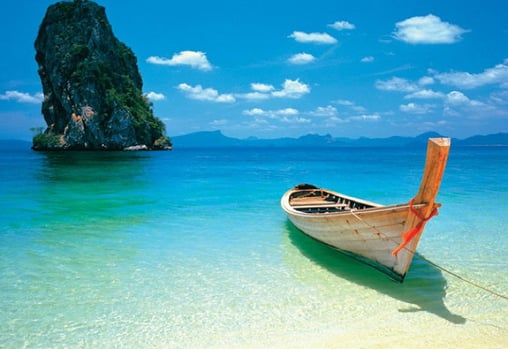 Fig.7: Phuket is famous for its crystal clear blue waters
Fig.7: Phuket is famous for its crystal clear blue waters
Phuket’s property market has remained resilient to domestic shocks in the past
Mainland Thailand has suffered its fair share of domestic shocks which, under other circumstances, would have drowned emerging property markets. Over the past 20 years, Thailand has suffered:
- The Asia Crisis
- SARS Virus Outbreak
- Bird Flu Outbreak
- The Indian Ocean Tsunami
- 2006 Coup d’Etat
- The Global Financial Crisis
- 2014 Coup d’Etat
- 2018 Phoenix Boat Disaster
Yet the island’s property market has boomed. It seems unlikely that a boat collapse will undermine the viability of the island’s investment potential in the long-term.
Moreover, with a wealthy and growing Thai middle-class, Phuket is not short of future investment tailwinds.
Given what Thailand and Phuket has withstood over the past decade, it would take truly catastrophic economic circumstances to sink this burgeoning Real Estate superpower.





